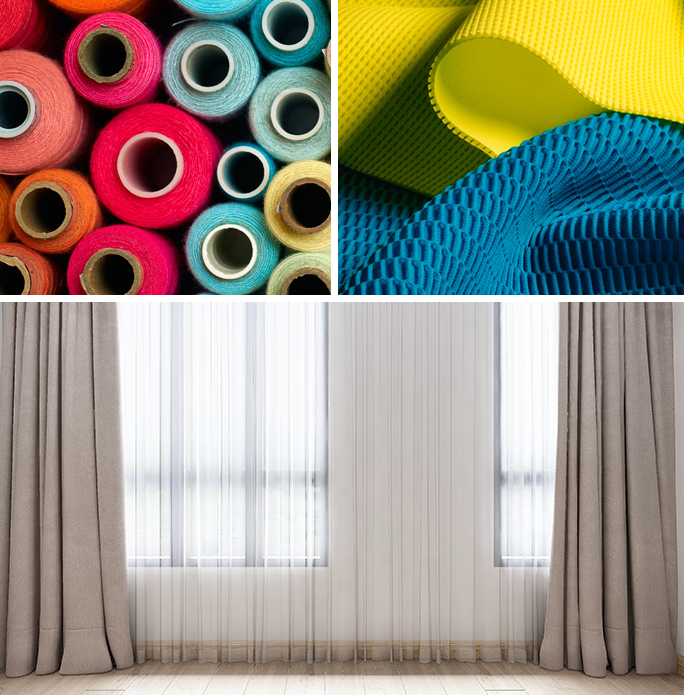Abst:Polyester yarn is a synthetic fiber that is widely used in the textile industry for a variety of app...
Polyester yarn is a synthetic fiber that is widely used in the textile industry for a variety of applications, including clothing, home furnishings, and industrial fabrics. It is produced through a complex manufacturing process that involves several key stages. In this article, we will explore the step-by-step process of how polyester yarn is manufactured.
Raw Material Preparation:
The first step in the production of polyester yarn is the preparation of raw materials. The primary raw material used in polyester yarn manufacturing is a petroleum-derived polymer called polyethylene terephthalate (PET). PET is a thermoplastic polymer that is synthesized from two main monomers, ethylene glycol, and terephthalic acid. These monomers are obtained from crude oil or natural gas through chemical processes.
Polymerization:
The next step is polymerization, where the PET is produced through a chemical reaction known as esterification or transesterification. In this process, ethylene glycol and terephthalic acid are combined in the presence of a catalyst and heated. This reaction leads to the formation of PET chips or pellets, which are small, uniform pieces of solid PET resin.
Melt Spinning:
Once the PET chips are obtained, they are melted and transformed into a liquid state in a process called melt spinning. The chips are fed into a hopper and heated in an extruder until they reach a molten state. The molten PET is then forced through spinnerets, which are small metal plates with numerous tiny holes. These spinnerets have a specific arrangement and number of holes, determining the type of yarn that will be produced. The molten PET is extruded through these holes, forming continuous filaments.
Solidification:
As the extruded filaments emerge from the spinnerets, they enter a chamber where they are rapidly cooled by a flow of air or other cooling agents. This cooling process solidifies the filaments and converts them from a molten state to a solid state.
Drawing:
The solidified filaments are then subjected to a process called drawing, which aligns the molecules and increases the yarn's strength and tenacity. The filaments are passed through a series of heated rollers, which are rotating at different speeds. This elongates the filaments, reducing their diameter and aligning the molecules in the longitudinal direction.
Crimping (Optional):
At this stage, the polyester yarn may undergo crimping, which imparts waviness or crimp to the filaments. Crimped yarns have enhanced bulkiness, softness, and better insulation properties, making them suitable for certain textile applications like carpets and fabrics with increased loftiness.

Texturizing (Optional):
Texturizing is another optional step in polyester yarn manufacturing, wherein the yarn is treated to give it a more natural or textured appearance. This process involves heating the yarn and then cooling it rapidly to create irregularities and loops in the filaments, simulating the texture of natural fibers like cotton or wool.
Heat Setting:
After drawing, crimping, and texturizing (if applicable), the polyester yarn is heat-set to stabilize its structure and dimensions. Heat setting involves passing the yarn through a series of heated rollers or ovens at controlled temperatures to fix the molecular arrangement, imparting dimensional stability to the yarn.
Dyeing (Optional):
Polyester yarn can be dyed at various stages of the manufacturing process, depending on the desired end-use and application. Dyeing can take place at the fiber stage (solution dyeing), the filament stage (mass dyeing), or after the yarn has been spun into fabric (piece dyeing).
Winding:
The final step in polyester yarn manufacturing is winding, where the finished yarn is wound onto spools or cones, making it ready for use in various textile applications. This winding process ensures the yarn is neatly packaged and ready for distribution or further processing.
In conclusion, polyester yarn is manufactured through a multi-step process that starts with the preparation of raw materials, followed by polymerization, melt spinning, solidification, drawing, and optional processes such as crimping and texturizing. The yarn is then heat-set, dyed (if required), and finally wound onto spools or cones. This versatile synthetic fiber offers a wide range of benefits, including durability, wrinkle resistance, and ease of care, making it a popular choice for various textile products in the fashion, home, and industrial sectors.
